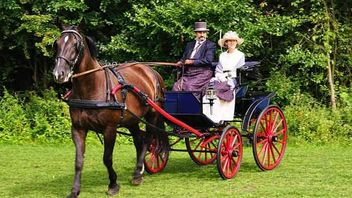
How to take into account the temperament and condition of horses when feeding
The temperament and condition of the horse is very important to consider when making up a diet for it. After all, the reaction to feed is determined by the individual needs of the horse. How to take into account the temperament and condition of horses when feeding?

Photo: nps.gov
For example, if a horse is very excitable, he may not eat well, and you have to go to all sorts of tricks to get him to eat more feed. These horses are often underweight. Conversely, a heavily balanced horse may eat too much and become overweight.
The approximate amount of feed, taking into account the weight of the horse, is presented in the table:
Horse characteristic | Amount of feed (% of body weight) |
Pony Overweight horses | 1,55 – 1,75 |
Normal weight horses doing moderate work | 2 |
Horses doing hard work Underweight horses Lactating mares | 2,5 |
To determine the exact amount of feed a horse needs, you need to know its weight. It is also important to accurately dose anthelmintics and medications.

Photo by wikipedia.org
The weight of a horse can be measured in many ways. The easiest is to measure on the scales, but they are not always available. Another way is to use a measuring tape and calculate the approximate weight of the horse, knowing the height at the withers and chest girth.
In the table below you will find the approximate weight of horses of various breeds:
horse breed | Height at withers (cm) | Chest girth (cm) | Horse weight (kg) |
Dartmoor pony | 113 | 140 | 200 – 250 |
welsh pony | 123 | 145 | 250 – 350 |
riding pony | 133 | 155 | 350 – 450 |
Newforest | 143,5 | 165 | 350 – 450 |
Арабская | 143 | 170 | 400 – 450 |
welsh cob | 145 | 175 | 450 – 500 |
Gunter | 154 | 180 | 475 – 520 |
riding breeds | 156 | 185 | 500 – 550 |
Thoroughbred | 164 | 190 | 500 – 550 |
Irish riding | 166 | 195 | 550 – 600 |
warm-blooded | 174 | 205 | 580 – 640 |
Shayr | 185 | 210 | 700 – 800 |





